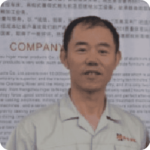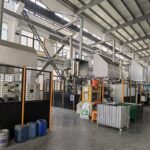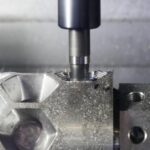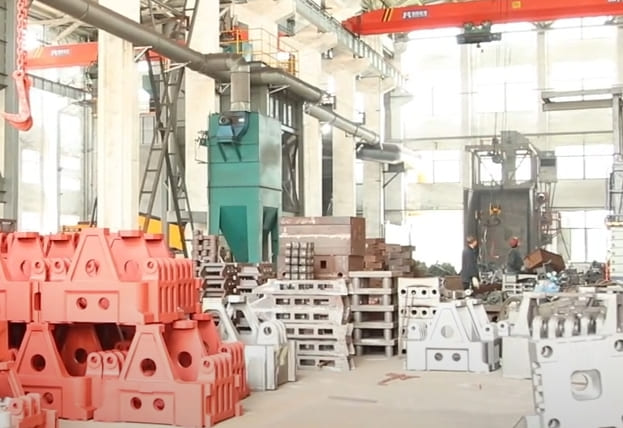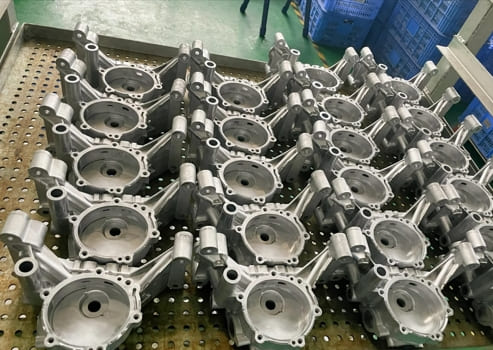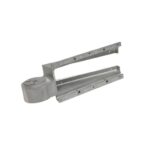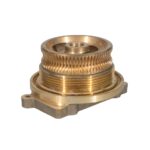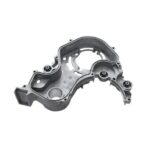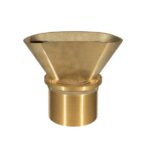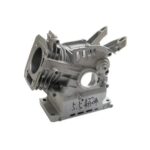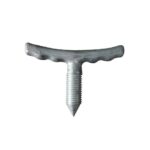Over the past two decades, I’ve worked closely with automotive engineers, purchasing teams, and project leaders across multiple countries. One request keeps surfacing—how do we make vehicles lighter without compromising strength?
Aluminum die casting has been one of the most practical and scalable answers. From engine housings to EV battery covers, it’s not just about replacing steel—it’s about optimizing the way parts are made. In this article, I’ll share what we’ve learned from producing aluminum die-cast components for the automotive sector and why it’s the right direction for modern vehicle design.
Why the Automotive Industry Relies on Aluminum Die Casting
Automakers are under increasing pressure to reduce vehicle weight, improve fuel efficiency, and comply with emission standards—especially with the EV transition.
Aluminum die casting checks all the boxes. It enables lightweight, strong, and high-precision parts suitable for everything from transmission housings to electric motor supports. Unlike sheet stamping or welding, die casting also allows part consolidation, reducing the need for fasteners and joints.
Key Automotive Parts Commonly Produced by Die Casting
Our factory has produced die-cast parts for ICE vehicles, hybrid systems, and fully electric platforms. These parts aren’t decorative—they’re structural and functional.
Common aluminum die-cast automotive components include:
- Transmission housings and gear covers
- Oil pans and engine brackets
- Electric motor shells and inverter cases
- EV battery housings
- Suspension mount brackets and structural cross-members
- HVAC control units and enclosure parts
Each part must meet tight tolerances, withstand thermal cycling, and offer long-term durability under vibration and load.
Benefits of Using Aluminum Die-Cast Components in Vehicles
Aluminum die casting is more than just a substitution for steel. It’s a process that offers unmatched precision, weight reduction, and design freedom when properly engineered.
- Weight Savings: Up to 50% lighter than cast iron or steel
- Dimensional Accuracy: Achievable to ±0.01 mm after machining
- Reduced NVH: Better fit and structural integration reduce noise
- Corrosion Resistance: Ideal for underbody and under-hood parts
- High Volume Efficiency: Tooling cost amortizes quickly over mass production
In EV applications, weight savings directly translate into extended range and smaller battery requirements.
Design Freedom and Integration: Less Welding, Fewer Parts
Traditional automotive assemblies often combine multiple stamped or machined parts through welding and fastening. With die casting, we help clients turn those multi-part assemblies into a single integrated unit.
One client came to us with a five-part bracket assembly. We redesigned it into a single die-cast unit, reducing weight by 18%, eliminating three weld points, and cutting assembly time by 40 seconds per vehicle. That adds up fast in high-volume production.
Aluminum Grades and Surface Treatments for Automotive Use
Different automotive applications call for different alloys. The selection depends on strength, thermal performance, machinability, and corrosion resistance.
| Alloy | Key Properties | Typical Application |
|---|---|---|
| A380 | Good balance of strength & flow | Transmission cases, bracket housings |
| B390 | High wear resistance | Oil pump housings, gear enclosures |
| ADC12 | Easy to cast, solid corrosion | Motor covers, electronics enclosures |
| 6061/6082 | Machinable, weldable | Structural EV chassis, reinforcements |
Surface finishes vary too—some customers request anodizing for corrosion, others prefer powder coating for branding. For high-heat zones, we offer chromate conversion or e-coating.
Our Experience with OEM and Tier-1 Automotive Projects
With more than 20 years of experience, we’ve supplied aluminum die-cast parts to both OEMs and Tier-1 suppliers in Europe, North America, and Southeast Asia.
We’re IATF16949 certified, and our factory integrates mold design, casting, CNC machining, and finishing. Some clients require full PPAP documentation and 100% dimensional reports—we support that from prototyping through production.
For example, we recently supported a European electric SUV platform with a redesigned inverter housing. The original part was welded sheet metal. Our die-cast version reduced mass by 21% and improved thermal consistency. After three production cycles, we were awarded four more parts.
Sourcing Tips: What Automotive Buyers Should Ask Die Casting Suppliers
Before requesting a quote, you should evaluate if your supplier is truly capable of handling automotive-level requirements.
Here’s what we recommend asking:
- Can you support DFM optimization before tooling?
- Do you provide mold flow analysis and simulation?
- What dimensional tolerance can you guarantee post-CNC?
- Are IATF16949 or ISO 9001 systems in place?
- Do you provide full PPAP packages and test reports?
- What is your shot capacity and cycle time for this part?
- How do you manage traceability and batch records?
We’re happy to walk buyers through these questions—even if they’re still in early design stages.
Want Lighter, Stronger Auto Parts supplier?
Aluminum die casting is reshaping the way automotive parts are designed and manufactured. From reducing weight and emissions to simplifying assemblies, it’s one of the few technologies that saves cost while boosting performance.
Looking for aluminum die-cast parts for your automotive platform?
Contact us at yongzhucasting@gmail.com.
We’ll review your drawing and provide a quote with technical feedback within 24 hours.


